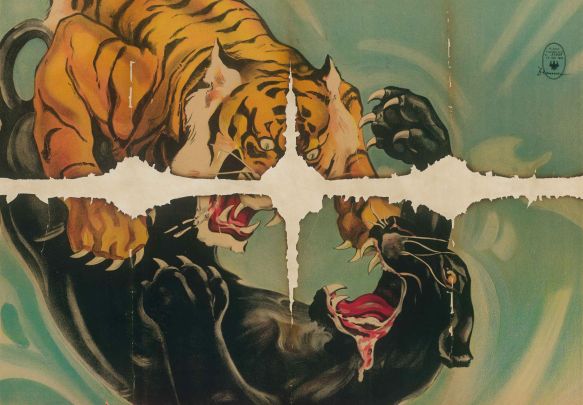
‘Bring ‘em back alive’, (USA, 1932, directed by Clyde E. Elliott)
-Source: Deutsche Kinemathek
Burn Marks – Film Posters from a Salt Mine
28.11.19 – 1.3.21
General Information
-
Brochure
Numerous international film posters from the first 40 years of film history were found in a salt mine in Grasleben, Germany in 1986, where part of the National Socialists’ Reichsfilmarchiv (Film Archive of the Third Reich) had been stored since World War II. We are presenting two dozen extensively restored posters and telling their history for the first time.
Did a miner’s lamp in Grasleben really tip over in June 1945, triggering the destruction of countless film materials? In a salt mine of all places, where these and other cultural assets were supposed to be protected from the effects of war? Or had American agents and special units already evacuated the storage area two months before and then used the fire to cover their tracks? These questions can presumably never be answered. What does survive are historical film posters into which the traces of time have literally been burned. These works have come into the care of the Deutsche Kinemathek in the interim, while further materials, documents and objects are still slumbering in the depths of the salt mine.
Why and how did the film archives make their way there in 1944‒45, during the last months of the war? And what happened at the mine after the war ended? This exhibition tells these stories. It also addresses the subject of protecting cultural assets and looks into the painstaking efforts that are undertaken to keep historical legacies from being forgotten.
Trailer
Trailer of the exhibition
Enjoy a small foretaste of our upcoming exhibition.
Exhibition topics
The Reichsfilmarchiv
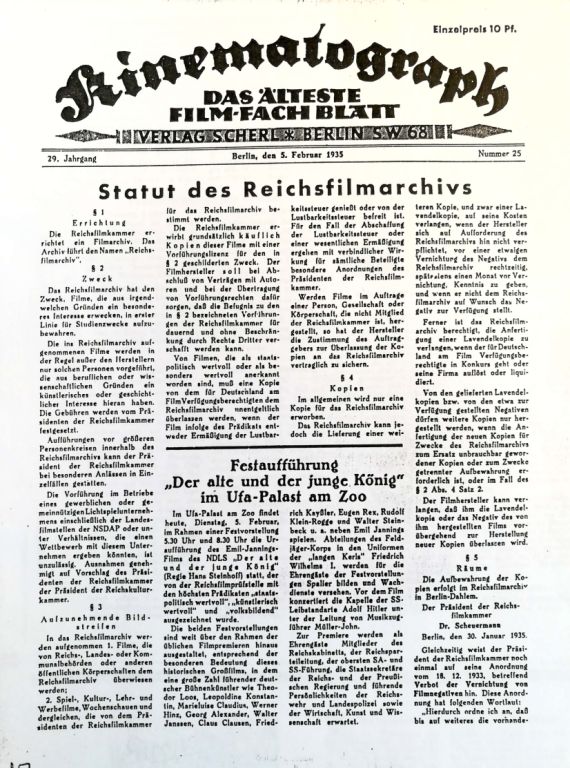
Statute of the Reichsfilmarchiv, published in the Kinematograph on 2/5/1933, source: SDK Library
To understand the (film) historical significance of the film posters and censorship materials found in Grasleben, the origin of this collection must be reconstructed. Therefore, we trace the history of the Reichsfilmarchiv – from its origins in 1933 and its integration into the propaganda apparatus of the National Socialists to the occupation policy during World War II and its relocation to the salt mine during its last months.
Protecting cultural assets in war
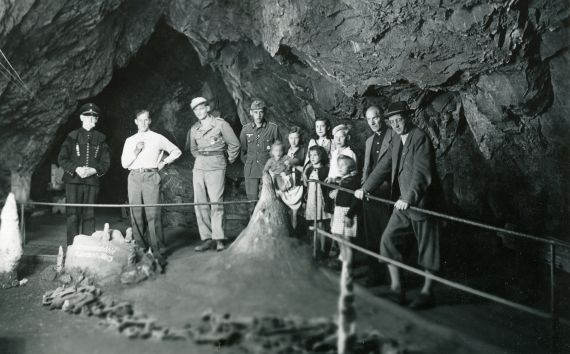
Business trip in September 1944, right: Richard Quaas, source: Hans-Rainer Quaas, Bad Groebenzell
To protect cultural assets from air raids, the National Socialists used the salt mine in Grasleben as a bunker for the film archive at the end of the World War II. Negatives of the ‘Wochenschau’ newsreels, secret documents as well as files of the censorship authority were stored and scheduled for destruction or removal when it became clear that the Germans would lose the war. However, the Allies marched in before and had parts of the archive removed themselves – some of which would remain lost for decades.
Rescue operations and restoration
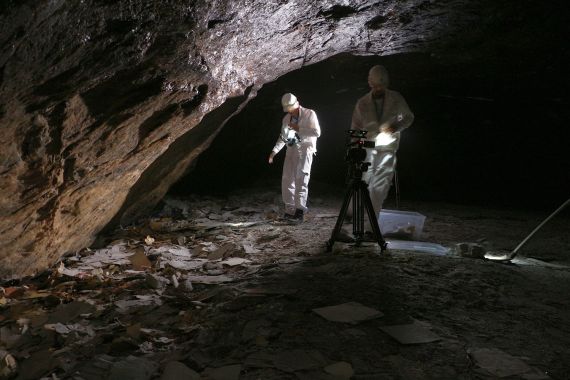
Rescue mission at the salt mine in Grasleben 2019, photo: Alexander Zöller
In the years 1986, 2017 and 2019, experts of the Kinemathek fetched crates of brittle and coked material from the mine. In addition to the rare film posters, the documents of the Film Review Office of the Third Reich are a sensational find. Little was known about the censorship of film advertising. In the exhibition, this gap is now closed by meticulous reconstruction of the film review procedure.
-
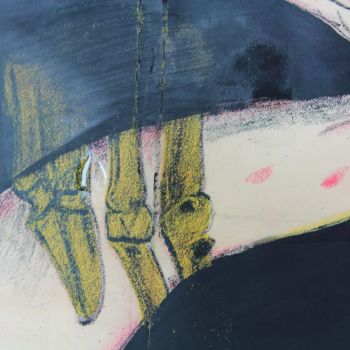
Detail of the poster ‘Pro Domo’ (GER, 1916, directed by Paul von Woringen).
The hand is exposed step by step during restoration. -
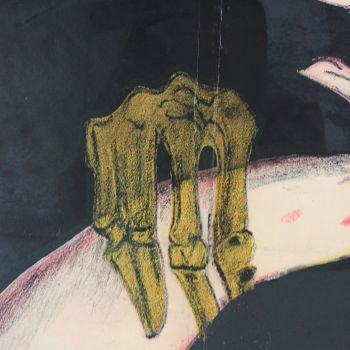
Detail of the poster ‘Pro Domo’ (GER, 1916, directed by Paul von Woringen).
The hand is exposed step by step during restoration. -
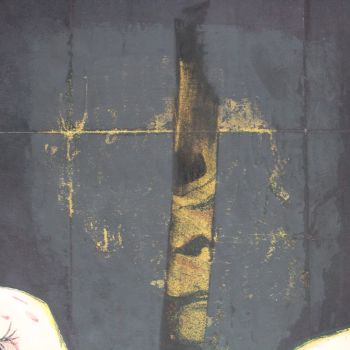
Detail of the poster ‘Pro Domo’ (GER, 1916, directed by Paul von Woringen).
The skull is exposed step by step during restoration. -

Detail of the poster ‘Pro Domo’ (GER, 1916, directed by Paul von Woringen).
The skull is exposed step by step during restoration. -
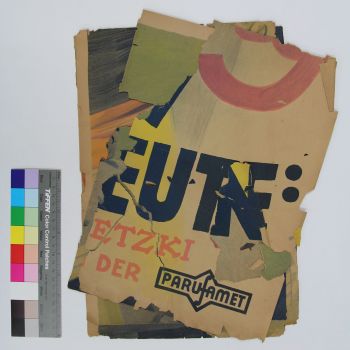
Poster for ‘Valencia’ (USA, 1926, directed by Dimitri Buchowetzki) after removal from the cover
Size: 140.4 x 96.0 cm
Censorship: none
Distribution: Parufamet
Graphics: Heinz Schulz-Neudamm
Print: no label
Condition: very fragile -
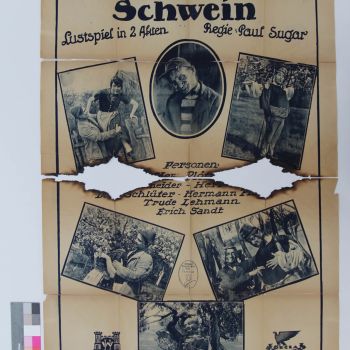
‘Das gestohlene Schwein’ (GER, 1921, directed by Paul Sugar)
Size: 92.0 x 59.0 cm
Review office stamp: 9/29/1921
Distribution: Decla Bioscop
Graphics: anonymous
Print: H. Roder, Berlin S 42 -
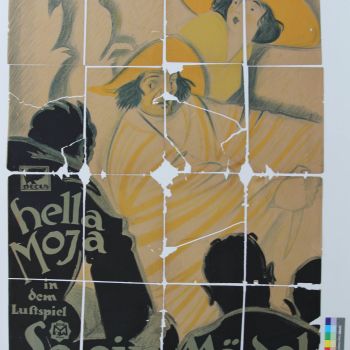
‘So ein Mädel’ (GER, 1919/20, directed by Urban Gad)
Size: 124.5 x 92.6 cm
Review office stamp: none
Distribution: Decla
Graphics: Leonard
Print: Hollerbaum & Schmidt, Berlin N 65 -
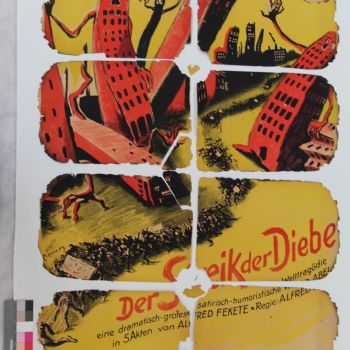
‘Der Streik der Diebe’ (GER, 1920/21, directed by Alfred Abel)
Size: 93.3 x 68.6 cm
Review office stamp: none
Distribution: not mentioned
Graphics: Riemer
Print: Plakatkunstanstalt Dinse & Eckert, Berlin SO 16
Events
Credits
Artistic Director: Rainer Rother
Administrative Director: Florian Bolenius
Exhibition concept: Rolf Aurich, Georg Simbeni
Curatorial assistance: Anett Sawall, Alexander Zöller
Project Manager: Peter Mänz
Project coordination: Georg Simbeni
Editing: Rolf Aurich, Julia Schell
English translations: Wendy Wallis, trans ART
Design of the exhibition graphics: Felder KölnBerlin
Exhibition architecture: jebram-szenografie
Restoration: Christin Frischmuth, Werkstatt Claus Schade
Conservational supervision: Sabina Fernández-Weiß
Digitalization: TU Berlin, Architekturmuseum in der Universitätsbibliothek
Reproductions: Bartneck Print Artists
Exhibition construction and technical services: Frank Köppke, Roberti Siefert
Lighting and AV technology: Stephan Werner
Design of the advertising graphics: Pentagram Design
media editing: Heinrich Adolf, Kilian Dorrmann; Boris Seewald, Georg Simbeni
Press: Heidi Berit Zapke
Marketing: Linda Mann
Website: Julia Pattis, Julia Schell
Educational Services and Outreach Programs: Jurek Sehrt
Guided tours and workshops: Jörg Becker, Jürgen Dünnwald
Lenders
Archiv der Max-Planck-Gesellschaft, Berlin
Heinrich Adolf, Hohenschäftlarn
Rolf Aurich, Potsdam
Bundesarchiv, Berlin
Bundesarchiv, Koblenz
Bundesarchiv-Filmarchiv, Berlin
esco – european salt company GmbH & Co. KG, Werk Braunschweig-Lüneburg in Grasleben
Jeanpaul Goergen, Berlin
Gosfilmofond Russlands, Belyje Stolby
Institut für Zeitgeschichte, München
NARA – National Archives and Records Administration, College Park, Maryland
Niedersächsisches Landesarchiv, Wolfenbüttel
Politisches Archiv des Auswärtigen Amtes, Berlin
Hans-Rainer Quaas, Gröbenzell
Helga Rathsack, Berlin
Bettina and Dirk Seewald, Bad Kreuznach
Ullstein Bild, Berlin
Hans-Gunter Voigt, Potsdam
Special thanks
Our thanks go to esco – european salt company GmbH & Co. KG, Heinrich Lohrengel, as well as to all our colleagues at the Deutsche Kinemathek.
Partners
In cooperation with:
Bundesarchiv
Media Partner:
filmdienst
The Deutsche Kinemathek is funded by:
Die Beauftragte der Bundesregierung für Kultur und Medien
-
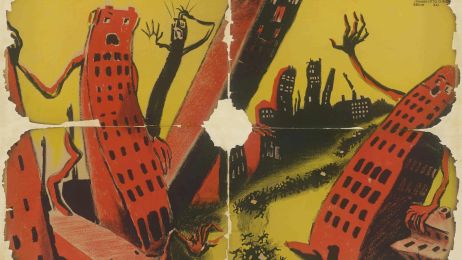
Find out more!
To the Online PresentationDiscover all 63 posters in our Digital Collection.
-
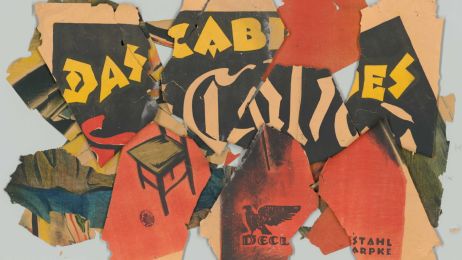
Be Caligari! – The Virtual Cabinet
To the ExhibitionFragments of a poster for the Das Cabinet des Dr. Caligari were also found in the salt mine. Dive into the film’s Expressionist imagery and learn more about its history.
